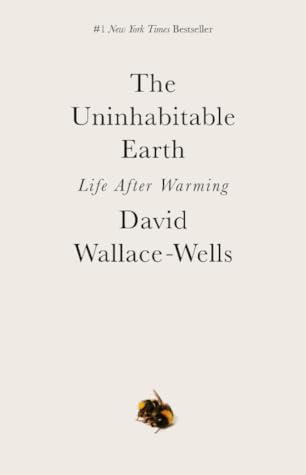More on this book
Community
Kindle Notes & Highlights
Read between
January 28, 2021 - October 14, 2023
When Bill McKibben declared “The End of Nature,” in 1989, he was posing a hyperbolic kind of epistemological riddle: What do you call it, whatever it is, when forces of wilderness and weather, of animal kingdoms and plant life, have been so transformed by human activity they are no longer truly “natural”? The answer came a few decades later with the term “the Anthropocene,” which was coined in the spirit of environmental alarm and suggested a much messier and more unstable state than “end.”
Twenty-two percent of the earth’s landmass was altered by humans just between 1992 and 2015. Ninety-six percent of the world’s mammals, by weight, are now humans and their livestock; just four percent are wild.
O. Wilson thinks the era might be better called the Eremocine—the age of loneliness.
For decades now, there have been few things with a worse reputation than “alarmism” among those studying climate change. For a concerned class, this was somewhat strange; you don’t typically hear from public health experts about the need for circumspection in describing the risks of carcinogens, for instance. James Hansen, who first testified before Congress about global warming in 1988, has named the phenomenon “scientific reticence,” and in 2007 chastised his colleagues for editing their own observations so conscientiously that they failed to communicate how dire the threat really was. That
...more
Some were derided as “climate porn.”
scientific reticence is another reason we don’t see the threat so clearly—the experts signaling strongly that it is irresponsible to communicate openly about the more worrisome possibilities for global warming, as though they didn’t trust the world with the information they themselves had, or at least didn’t trust the public to interpret it and respond properly.
they have erred, so routinely it became a kind of professional principle, on the side of excessive caution—which is, effectively, the side of complacency.
scariest implications of new research from the public. As part-time advocates, scientists have also watched their colleagues and collaborators pass through many dark nights of the soul, and typically despaired themselves as well, about the coming storm of climate change and just how little the world is doing to combat it. As a result, they were especially worried about burnout, and the possibility that honest storytelling about climate could tip so many people into despondency that the effort to avert a crisis would burn itself out. And in generalizing from that experience, they pointed to a
...more
the finding of a 2017 Nature paper surveying the full breadth of the academic literature: that despite a strong consensus among climate scientists about “hope” and “fear” and what qualifies as responsible storytelling, there is no single way to best tell the story of climate change, no single rhetorical approach likely to work on a given audience, and none too dangerous to try. Any story that sticks is a good one.
In 2018, scientists began embracing fear, when the IPCC released a dramatic, alarmist report illustrating just how much worse climate change would be ...
This highlight has been truncated due to consecutive passage length restrictions.
it did not address any of the scarier possibilities for warming,
The thing that was new was the message: It is okay, finally, to freak out.
So why wouldn’t anyone listen to them? It had to be the rhetoric. What other explanation could there be?
The scroll of cognitive biases identified by behavioral psychologists and fellow travelers over the last half century is, like a social media feed, apparently infinite, and every single one distorts and distends our perception of a changing climate—a threat as imminent and immediate as the approach of a predator, but viewed always through a bell jar.
There is, to start with, anchoring, which explains how we build mental models around as few as one or two initial examples, no matter how unrepresentative—in the case of global warming, the world we know today, which is reassuringly temperate. There is also the ambiguity effect, which suggests that most people are so uncomfortable contemplating uncertainty, they will accept lesser outcomes in a bargain to avoid dealing with it. In theory, with climate, uncertainty should be an argument for action—much
There is anthropocentric thinking, by which we build our view of the universe outward from our own experience,
a reflexive tendency that some especially ruthless environmentalists have derided as “human supremacy”
There is automation bias, which describes a preference for algorithmic and other kinds of nonhuman decision making, and also applies to our generations-long deference to market forces as something like an infallible, or at least an unbeatable, overseer.
this has meant trusting that economic systems unencumbered by regulation or restriction would solve the problem of global warming as naturally, as surely as they had solved the problems of pollution, inequality, justice, and conflict.
the bystander effect, or our tendency to wait for others to act rather than acting ourselves; confirmation bias, by which we seek evidence for what we already understand to be true, such as the promise that human life will endure, rather than endure the cognitive pain of reconceptualizing our world; the default effect, or tendency to choose the present option over alternatives, which is related to the status quo bias, or preference for things as they are, however bad that is, and to the endowment effect, or instinct to demand more to give up something we have than we actually value it (or had
...more


